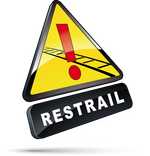- WP1: Qualitative analysis of suicide and trespass on railways properties
- WP2: Assessment of measures targeted to reduce railway suicides
- WP3: Assessment of prevention measures targeted to reduce railway trespasses
- WP4: Mitigation of Consequences by Improving Procedures and Decision Making
- WP5: Field pilot tests and evaluation
- WP6 Dissemination and exploitation of the results
- WP7: Administrative and Financial Management
Led by VTT
This work package aims to collect and analyse data related to railway suicides and trespassing accidents. The main objectives of this WP are:
- to provide a systematic description of current knowledge concerning railway
suicides and trespassing accidents, - to collect statistical and behavioural data concerning railway suicides and
trespassing accidents, - to collect data concerning the consequences of suicides and trespassing accidents,
- to analyse the collected data and draw the conclusions.
Led by TRAFIKVERKET
WP2 aims to identify and provide an assessment of the most efficient measures and analyze the conditions of success in terms of suicide prevention on the European and the whole world’s rail network, taking into account regional/national differences, locations and hot-spots and level crossings, etc.
After developing the methodologies for assessing technical and soft measures, those methodologies will be applied to each type of measure with the aim of finding the best measures (in terms of cost-effectiveness criteria) to be applied later in the pilot tests during WP5.
Led by IFSTTAR
This work package is dedicated to analyse the best practices (technological and non-technological) and to identify the cost-efficient measures to prevent railway trespassing accidents and incidents. The main tasks focus on the assessment of identified countermeasures (technical and soft measures) for preventing trespasses, taking into account the research findings and good practices by railway undertakings (RU) and infrastructure managers (IM).
The attention will be given to the development of new approach of soft measures to avoid trespassing accidents. The aim is to develop recommendations and guidelines for mitigation measures to reduce human fatalities and disruption of services resulting from trespasses on railways property.
Led by MTRS3
The objective of this work package is to develop methods and tools that can be integrated with existing procedures and technologies in order to achieve the most effective and cost-efficient means of mitigating the potential impact of suicides and trespasses on railway infrastructures.
The work package will address suicides and trespasses occurring on all railway infrastructures. This will cover the line of route, stabling and maintenance facilities and any other location where suicides and trespasses may disrupt train operation. The benchmarks for the soft measures to be developed within this work package will take into account the methods and procedures presently implemented by IMs; RUs; state, municipal and railway police; fire brigades; other first responders and other stakeholders in Europe – on which information will have been collected and analysed in WP1.
The purpose of the research activity from this perspective is to identify, from acquired knowledge, proven effective and cost-efficient arrangements, and to compile these into a functional information reference source. This source will support the stakeholders as they assimilate the identified methods, tools, procedures and managerial models in order to reduce the consequences of suicides and trespasses. The benchmarks for the technologies and applications that may be used by the various stakeholders will be based on existing platforms
and applications implemented in the industry, such as those utilized by the infrastructure managers and railway undertakings cooperating as partners in this work package.
Led by CIDAUT
Within this work package a selection of the most promising mitigation measures and good practices will be selected for being implemented and assessed, in order to be proposed for wide implementation in railway environments throughout Europe, taking into account the existing national/regional differences. These measures could had been previously and successfully tested in one country, or in other cases, they could have been founded quite promising by experts in previous work packages WP2, WP3 and WP4.
Therefore, the objectives of this work package are:
- To make a final selection of the most promising measures, in terms of cost-effectiveness, to be implemented in the pilot tests.
- To implement several pilot tests (field pilot projects) in different locations in Europe.
- To evaluate and assess the results of these trials, trying to demonstrate that preventive measures identified are feasible and cost-effective.
- To make recommendations and provide guidelines about measures and their implementation by stakeholders in the future after the project. These measures and their implementation plans will be previously refined taking into account what has been found in the pilot tests
Led by UIC
The objectives of dissemination and exploitation activities, which shall contribute to the scientific and technical progress of the project as well as to a broad implementation of the project results, are:
- inform the targeted public on the existence of the project and its objectives, in order to generate interest for the project results implementation
- distribute appropriate information to each type of identified target so that each group be able to easily use and apply the information it is concerned of
- to maintain the viability of the project results
Led by UIC
The objectives are:
- Ensuring an efficient project management for the whole consortium and making sure that the project objectives will be met within the given budget frame and schedule.
- Set up project specific management tools and procedures with the aim of ensuring a proper and accurate
- Reporting and accounting to the Commission


